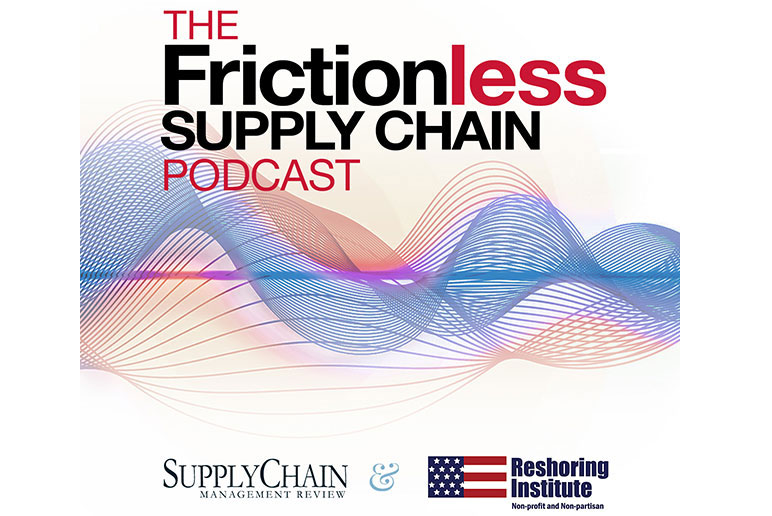“It’s so frustrating sometimes!” she lamented, as we sat chatting over coffee.
I nodded in agreement, remembering similar conversations I’d had with past clients, and my own battles in my time as a supply chain executive.
I could well understand Isabelle’s feelings. As Vice President of Supply Chain Management, her role was technically demanding anyway; never mind having to constantly grapple with selling the supply chain agenda and secure investment funding and support from the C-suite and other senior executives. Dealing with the politics and skulduggery amongst senior managers was extra hassle she could do without.
And it was nothing to do with her gender.
This challenge of winning friends and supporters at the top table and power circles of the organization is one that many supply chain managers will identify with. It’s one of the reasons we recognize the importance of stakeholder management in our work.
Shrewd supply chain pros know that building and maintaining a network of fans and cheerleaders, right across the organization but especially at senior levels, demands more than delivering good operational performance – though that’s always a great aid.
Like Isabelle, many supply chain managers run operations that perform well, yet still face the same organizational difficulties with progressing their supply chain agenda.
Our conventional knowledge and toolkit for managing stakeholders – stakeholder mapping, engagement planning, and so on – are valuable. But they’re often inadequate to effectively handle the politics and power plays that, ultimately, determine our level of work success and the nature of our organizational life. If we’re organizationally savvy, life can be sweet – for us as individuals and for our supply chain function: we sustain a burgeoning fan club at the top table, investment flows into the function, our people are happy at work, and supply chain management can seem almost as good a place to be as heaven. If we’re not clued up to the organizational dynamics, life can be frustrating indeed: our supply chain agendas are often thwarted or hamstrung, getting funding for even critical investment can seem like climbing Everest, and supply chain management can start to feel like an oxymoron.
Being organizationally savvy means we often we have to go deeper than conventional stakeholder management approaches; we’ve got to grasp the dynamics of politics, power and human idiosyncrasies at play in any organization, stuff we don’t usually learn in “Supply Chain School”.
As I explain in Sweet Stakeholder Love, we should always remember that stakeholders are not static beings; they’re human beings. And humans are not like computers or light switches that one can simply turn on and turn off. We’re not wholly rational nor behave in reasonable ways; we’re complex beings, with behaviors that can sometimes be idiosyncratic, induced by a blend of personal, psychological and environmental influences.
The personal factors that sometimes impel our behaviors are things like age, gender, marital status, education and religious beliefs. The psychological influences include personality types, attitudes and values. And the environmental factors are things like political orientations, financial or economic circumstances and social and cultural norms. With this composite soup of influences, it’s no surprise that dealing with some humans can sometimes feel like handling jelly.
On top of that, we’re also driven by so many visible and invisible forces – like our personal motivations, the problems and struggles we’re living through, or the emotions coursing through our spirit at any point in life. For instance, a stakeholder going through a bitter divorce may not be the most agreeable person to work with at the time. Nor would a stakeholder facing severe health problems or contending with some other traumatic circumstances, perhaps.
And even more frustrating to deal with might be a stakeholder who is adept at employing Machiavellian tactics for his/her own personal agenda and self-interests – typically to expand or maintain influence, power, status or leverage, or other ego-boosting motives.
Most, if not all, organizations have a few such individuals.
And some organizations are awash with them.
Moreover, it’s usually more common higher up, closer and right up to the top table – the domains of the organization where the big fish stakeholders dwell. Sometimes, dealing with the myriad of maneuvers and seemingly irrational behaviors amongst these folks can feel like swimming through shark-infested waters; brown-nosing, narcissism and chicanery abound, and cover-your-backside moves may be standard operating procedure for some.
These are some of the hidden reasons supply chain managers sometimes struggle to gain traction and win in their work – whether that’s getting project buy-in, recruitment authorization, budgetary or business case approval, or achieving internal integration and alignment.
Winning requires understanding and addressing the motivational drives and behaviors of senior-level stakeholders – some of whom are the biggest and baddest sharks. It’s how the best supply chain managers go about their business, delivering success with finesse and flair.
In these organizational dimensions, formal job title and functional responsibility may mean little; it’s the real organizational structure that counts. The formal organizational chart – the one shown to you at your induction or plastered on the corporate intranet – may only ever tell you a little of how things are really organized, so basing your stakeholder management approach on it may not always yield progress.
The real organizational structure, often created and controlled by the sharks and other big fish, is an informal web of motives, relationships and bonds that dictates how things really progress, or don’t. It’s an ecosystem that can be rife with so many unspoken forces and minefields.
For example, Shark A and Shark B who are sworn enemies, or may head competing fiefdoms, and consequently are always on the lookout to profit from opportunities for power grabs; Big Fish X who is a sponsor and protector of Stakeholder Z, and will thus block anything that threatens the position or advancement of her protégé; Stakeholders A, B and C who are entangled in a ménage à trois that is as gripping and addictive as nothing you can imagine, and is so all-consuming as to blot out any modicum of common sense; Big Fish D and Shark C who are tight buddies outside work, play soccer together and will always guard each other’s interests come rain or shine; or Big Fish C who is a virtuoso at stealing credit for other people’s work, and will always seek avenues to practice his dirty craft in order to further his status in the organization.
If you think these sorts of forces and other similar dynamics aren’t at play in your own organization to some degree, you may be grossly mistaken.
The real organizational structure is an important factor that strongly influences how sharks and other stakeholders respond to you and your work agenda.
And within that structure, more often than not, some of the most fruitful nodes of influence that can be easily neglected are the gatekeepers: the personal assistants and executive assistants who act as aides, guardians and protectors. They usually have more sway in the ecosystem than many people realize, particularly because of their roles working so intimately with the sharks and other big fish. They tend to be in the know – sometimes even more than their bosses – and can frequently affect the perceptions and perspectives.
Keeping the gatekeeper sweet, and perhaps even asking for their help or advice outright, can often reap lucrative rewards.
Supply chain management is a rewarding career in itself. Working at the core of the organization’s value chain offers fabulous opportunities; especially in these times where global economic uncertainties and geo-political factors continue to position SCM as a key boardroom agenda item across the world. We make the work even more rewarding and fulfilling for ourselves through our successes – the results we accomplish for our function, our people, and the organizations we serve. And we can amplify those successes tremendously by becoming more organizationally savvy, just like the best amongst us.
Sigi Osagie helps organizations and individuals boost their workplace effectiveness and performance to achieve their business and career goals. He is the author of the highly acclaimed Procurement Mojo – Strengthening the Function and Raising Its Profile and Career Dreams to Career Success. He can be contacted at www.sigiosagie.com.
SC
MR


Latest Supply Chain News
Latest Resources

 Explore
Explore
Latest Supply Chain News
- Geopolitical readiness in supply chains: Strategic challenges for leaders
- Unlocking retention: The role employee engagement plays
- Can supply chain managers embrace an entrepreneurial mindset?
- Challenges to ESG reporting
- With capacity to spare, logistics real estate demand remains subdued
- Tariffs, taxes and trade: The impact of Trump’s reelection on the supply chain
- More latest news
Latest Resources

Subscribe

Supply Chain Management Review delivers the best industry content.

Editors’ Picks




